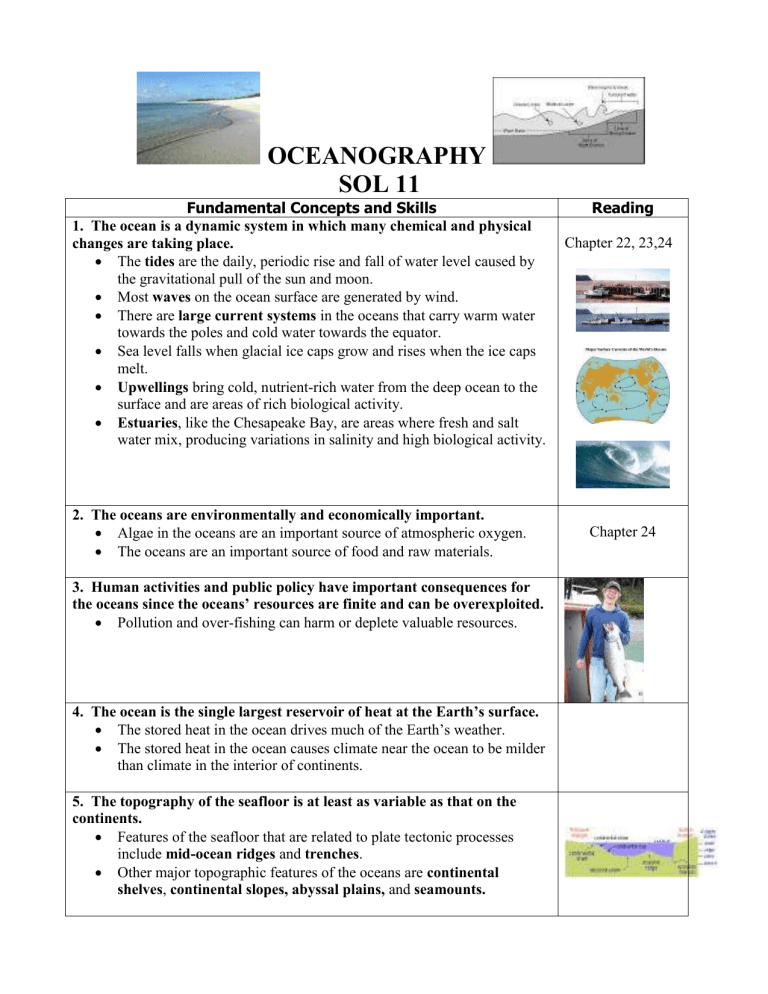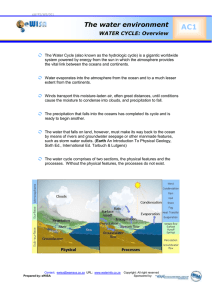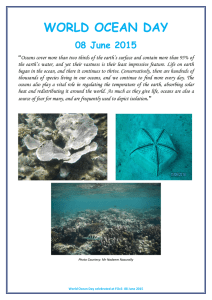OCEANOGRAPHY SOL 11

OCEANOGRAPHY
SOL 11
Fundamental Concepts and Skills
1. The ocean is a dynamic system in which many chemical and physical changes are taking place.
The tides are the daily, periodic rise and fall of water level caused by the gravitational pull of the sun and moon.
Most waves on the ocean surface are generated by wind.
There are large current systems in the oceans that carry warm water towards the poles and cold water towards the equator.
Sea level falls when glacial ice caps grow and rises when the ice caps melt.
Upwellings bring cold, nutrient-rich water from the deep ocean to the surface and are areas of rich biological activity.
Estuaries , like the Chesapeake Bay, are areas where fresh and salt water mix, producing variations in salinity and high biological activity.
Reading
Chapter 22, 23,24
2. The oceans are environmentally and economically important.
Algae in the oceans are an important source of atmospheric oxygen.
The oceans are an important source of food and raw materials.
3. Human activities and public policy have important consequences for the oceans since the oceans’ resources are finite and can be overexploited.
Pollution and over-fishing can harm or deplete valuable resources.
Chapter 24
4. The ocean is the single largest reservoir of heat at the Earth’s surface.
The stored heat in the ocean drives much of the Earth’s weather.
The stored heat in the ocean causes climate near the ocean to be milder than climate in the interior of continents.
5.
The topography of the seafloor is at least as variable as that on the continents.
Features of the seafloor that are related to plate tectonic processes include mid-ocean ridges and trenches .
Other major topographic features of the oceans are continental shelves , continental slopes, abyssal plains, and seamounts.





